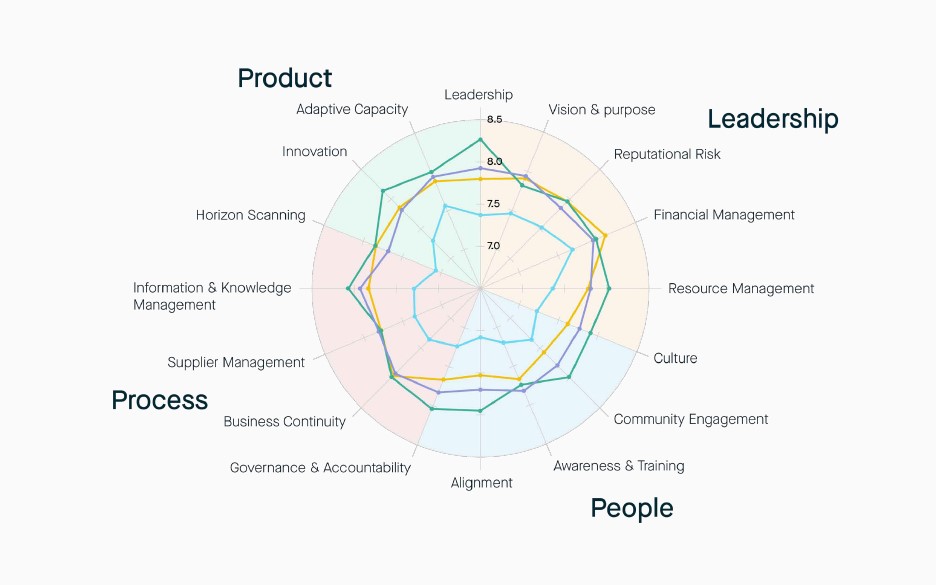The BSI Organizational Resilience Framework
Organizational resilience is a vital aspect to ensuring business leaders constantly remain future-ready.
Our thought leadership activity is developed specifically to provide leaders with insights to benchmark and assess their organization's resilience and provide wider context into global trends and challenges.

The BSI Organizational Resilience Framework measures perceived performance on a scale of 1-10 across 16 elements in four categories (Leadership, People, Process and Product) and can benchmark by sector, size, and longevity.
Our benchmarking tool enables senior executives to develop personal insight into the resilience of their own organizations and compare this relative performance with similar organizations in their sectors and geographies.
BSI empowers our clients to become ready for what's next. Through shaping, sharing, and embedding industry best practice, BSI improves organizations' resilience by providing tools and techniques so they are equipped to meet the challenges of today and tomorrow.






